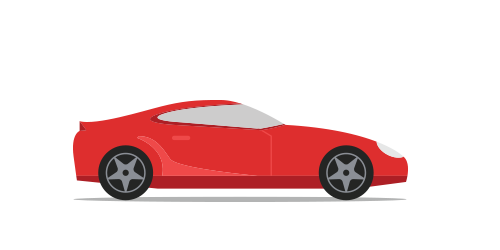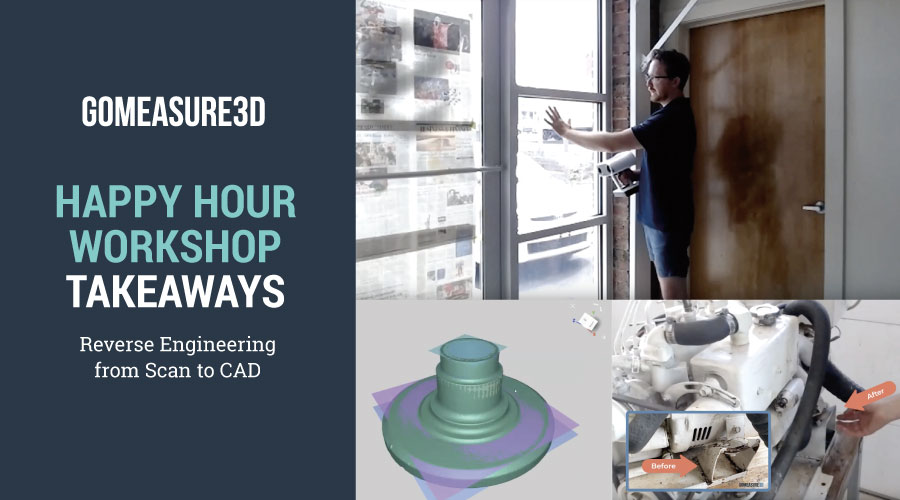
We had our first-ever virtual Happy Hour Workshop this year. It was a great place where anyone could ask us questions and our team would answer them with a live demonstration. In this workshop, our focus was on the topic of reverse engineering from Scan to CAD. Our goal was to show how much easier and simpler it is to use 3D scanner data as a reference for product design instead of designing a CAD model from scratch.
For those who missed the session, here’s a quick recap by exploring three questions we answered and the key takeaways.
- How can I make the process of reverse engineering from Scan to CAD faster and simpler?
- Do I need dedicated 3D reverse engineering software?
- How does reverse engineering using Artec Studio 3D scanning software compare to using dedicated Scan to CAD software?
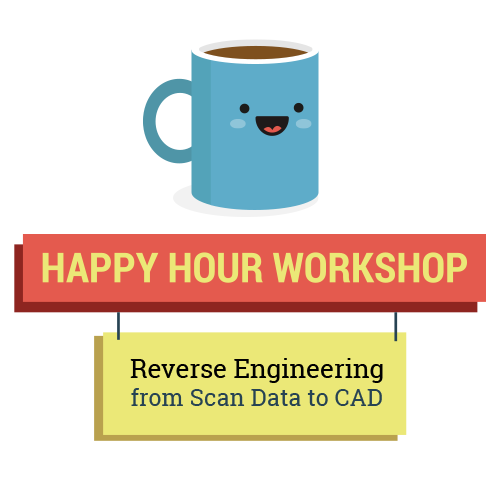
Watch the Scan to CAD Episode On-Demand
If you want to view our Happy Hour Workshop in its entirety, you can watch the recording.
Question #1
How Can I Make The Process of Reverse Engineering from Scan to CAD Faster and Simpler?
Most of the time for basic reverse engineering applications, you don’t need to use a 3D scanner to capture a 3D model of your entire part down to the finest details to convert it from scan data to CAD. All you need is to take the necessary 3D measurements from the part using a 3D scanner as the data you get is extremely accurate. That means you might just need to take a couple of scans to get the critical information you need in order to figure out—for instance, hole locations or the basic structural dimensions of the part. Capturing only the data you need also keeps your file size small so you’re not dealing with big files you really don’t need.
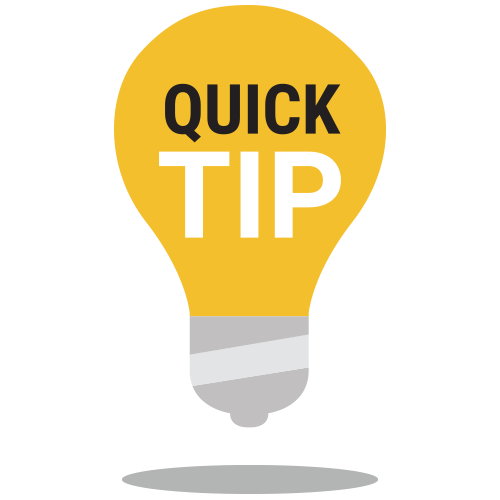
Takeaway #1
You don’t need a fully completed 3D model to do reverse engineering from Scan to CAD. By scanning only the information you need, will make your reverse engineering process that much more efficient.
Example:

The project was to create a CAD model for the corroded mount (on the left) so we can manufacture and replace it. Since we don’t have the original CAD drawings, we need to make a new one. On the other side of the boat engine (on the right), the mount is in good condition so we scanned this one and used the scan data as a reference for design for creating the CAD model to replace the damaged mount. By 3D scanning the part in place without taking anything apart, we only needed to take out the corroded part once when we replaced it with the new one. The engine can remain in use until the replacement mount is ready.
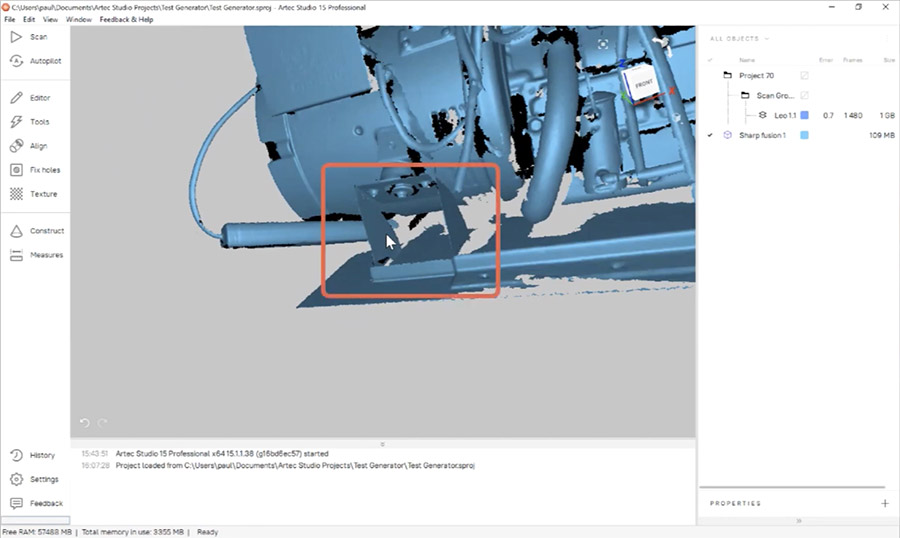
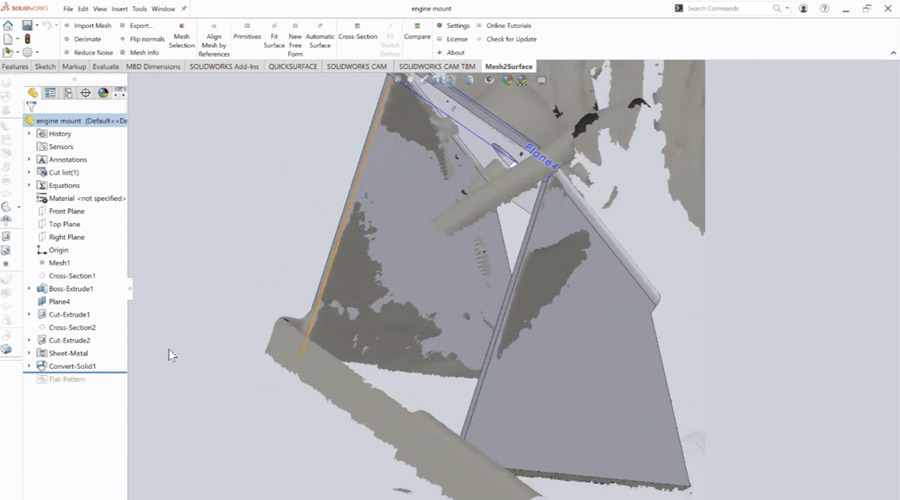
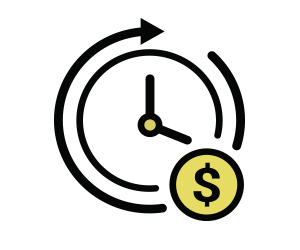
The entire process from 3D scanning, drawing the CAD model, and sending the file to a fabricator for manufacturing took about 20 minutes.
Question #2
Do I Need Dedicated 3D Reverse Engineering Software?
Before we get to this question, we want to give a brief explanation of the two ways you can reverse engineer a part using 3D scan data as a reference to create a CAD model.
Ways To Reverse Engineering a Part from Scan to CAD
-
Using a dedicated 3D reverse engineering software
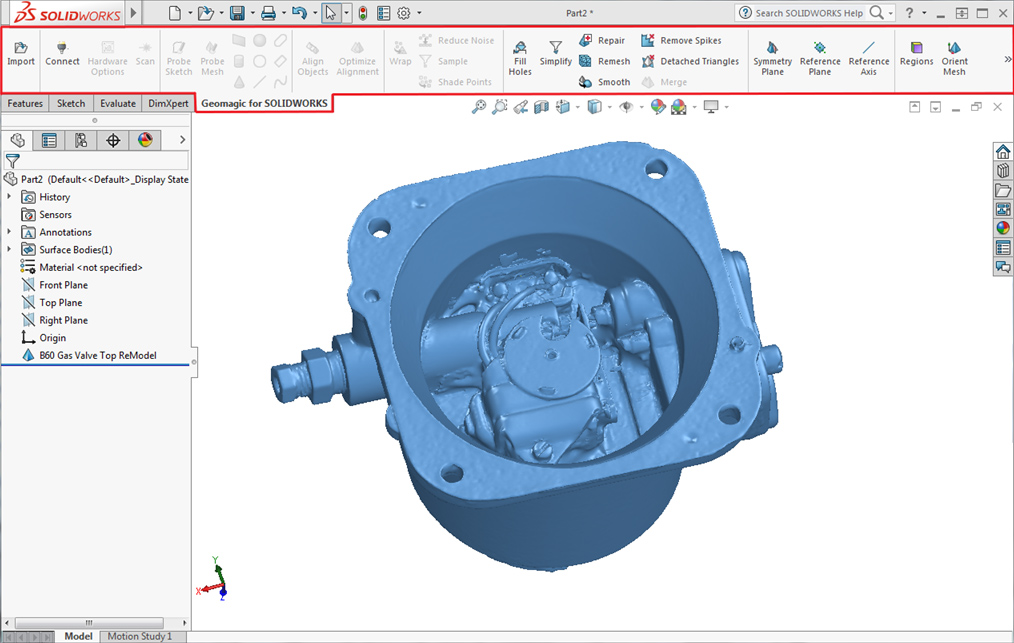
Examples:
- Standalone software: Geomagic Design X and QUICKSURFACE
- Plug-in: Geomagic for SOLIDWORKS and Mesh2Surface for Rhino / Mesh2Surface for SOLIDWORKS
How It Works:
After your 3D scanning is complete, you would need to export your scan data out into an STL file from your 3D scanning software and then import it into these types of software to do the reverse engineering. These software have comprehensive and powerful tools to help you use scan data as a reference point for designing a new CAD model instead of doing it from scratch, making the job that much easier.
-
3D scanning software such as Artec Studio has basic reverse engineering features.
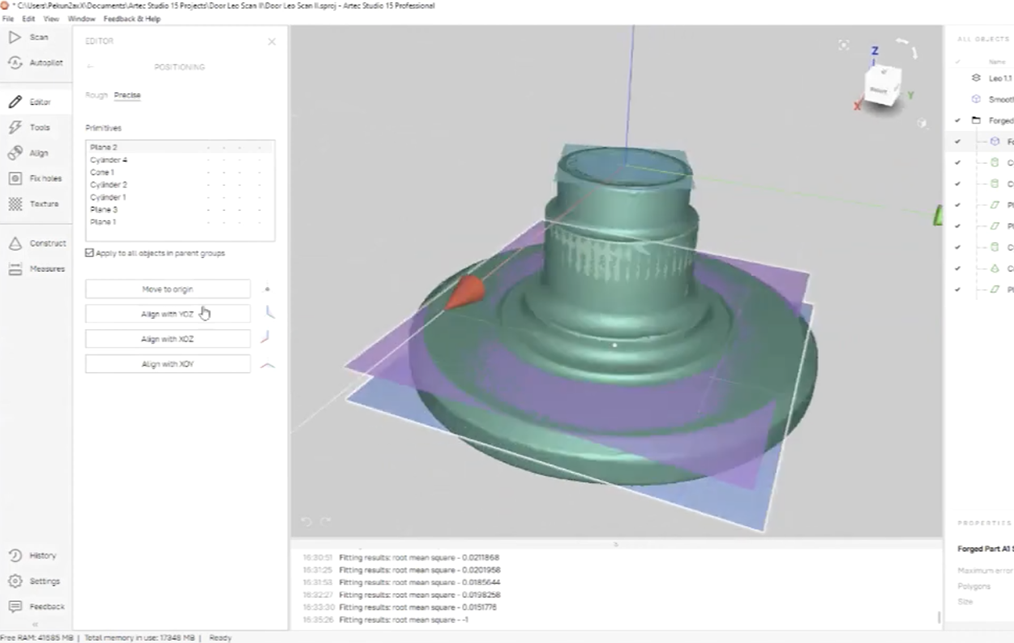
In Artec Studio 15, basic reverse engineering operations can be done if you don’t have dedicated reverse engineering software, or a Scan to CAD plugin for your favorite CAD software.
How It Works:
After you have completed your scans in Artec Studio and have merged them into the desired 3D model, you can use primitives to extract key geometrical data in a CAD format. Precise Positioning features makes it easier to position 3D models in the world coordinate system. Artec Studio allows you to export correctly positioned models with primitives aligned to the scan data as popular CAD formats (STEP or IGES files). You can then import them into SOLIDWORKS, Geomagic Design X and other CAD software for use to aid in sketching your CAD model.
Questions to Ask Yourself:
Going back to our original question, Do I need a dedicated reverse engineering software?, there are three additional questions you have to ask yourself. If you answer “yes” to the following questions, then investing in dedicated Scan to CAD software will help you save time.
-
Would you be doing reverse engineering pretty regularly?
If you are doing reverse engineering on a regular basis, having a dedicated software is a time saver.
-
Are the parts you are trying to reverse engineer have complex geometry?
Dedicated Scan to CAD software is better at handling freeform surfaces and organic shapes to create a CAD model that’s highly accurate to your scan data.
-
Is saving time an important factor for you?
Dedicated Scan to CAD software has advanced tools that can help you be much more efficient at reverse engineering. We’ll show you more in the next takeaway.

Takeaway #2
If you only have one-off projects or if you just started to explore the possibilities of using Scan-to-CAD for your projects, you might want to try using Artec Studio first before investing into dedicated reverse engineering software to see if it’s a right fit for you.
Having a dedicated reverse engineering (Scan-to-CAD) software will make work easier and more efficient. If you do reverse engineering almost everyday, having a dedicated software will help you be more productive.
Typically, Scan to CAD plugins provide advanced reverse engineering functionality that you normally can’t get inside your preferred CAD modeling software (SOLIDWORKS, Rhino, etc.). It will cost less than a standalone software like Geomagic Design X or QUICKSURFACE if you are on a tight budget. It’s also a great choice if you prefer to do reverse engineering inside your preferred CAD modeling software.
Question #3
How Does Reverse Engineering Using Artec Studio Compare To Using Dedicated Scan to CAD Software?
In order to demonstrate the differences, it’s best to show step-by-step videos of the processes.
Artec Studio
For Artec Studio, Art gives you a quick tour of the reverse engineering features. Here is a preview.
Dedicated Scan to CAD Software or Plugin
Here is a video where we summarize and demonstrate the different options:

Takeaway #3
As you can see, you can take different paths to achieve the goal. It really depends on which method you choose to get the results you want. If you own a 3D scanner like the Artec, the Artec Studio software has all the great features for 3D scanning. As a bonus, it also includes basic reverse engineering functionalities that can allow you to do reverse engineering if you don’t want to spend extra money on a dedicated Scan to CAD software.
Using Artec Studio versus dedicated reverse engineering software is like taking a bus versus driving a car. It might be more economical to take the bus but having your own car is going to get you to your destination faster and it will take you to exactly where you need to go.
| Economical | Advanced Features | |
|---|---|---|
TransportationGoing to a specific destination |
Riding a BusYou would still need to walk to your destination as the bus only takes you to the bus stop. |
Taking a CarTakes you to the exact location of where you want to go faster than a bus. |
Reverse EngineeringUsing scan data as a reference for design |
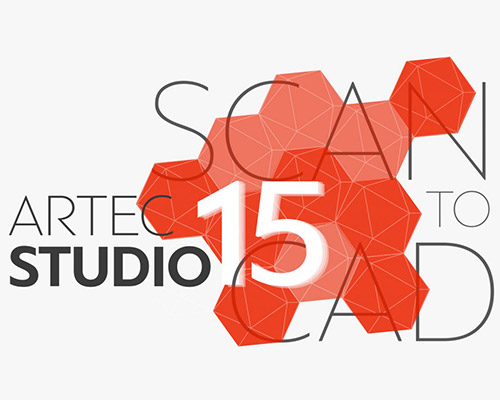
Artec Studio 15 3D Scanning SoftwareIncludes bonus reverse engineering features |
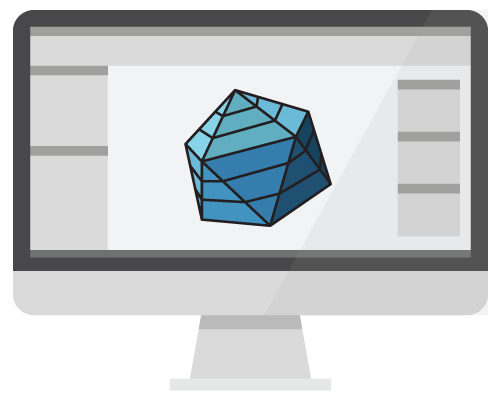
Dedicated Reverse Engineering Software or Plug-inThis is specifically what this software or plugin is built for. Specializes in Scan to CAD toolsets. |
In Conclusion
You might be thinking of buying a 3D scanner for a specific application (for instance, for 3D visualization or quality inspection) and wanted to see what other purposes (such as reverse engineering) you can use the system for to justify the purchase. You might be also considering using 3D scanning to help you be more efficient at product design.
If you have questions related to Scan to CAD and want to explore your options, watch our Happy Hour Workshop episode to find out more.
Other questions that were asked and answered in the workshop include:
- How do you do reverse engineering with Fusion 360?
- What are the major differences between SOLIDWORKS and Rhino?
- Which 3D scanner is the best for starting out reverse engineering from Scan to CAD?
We recorded the session and it’s now available for on demand viewing.


